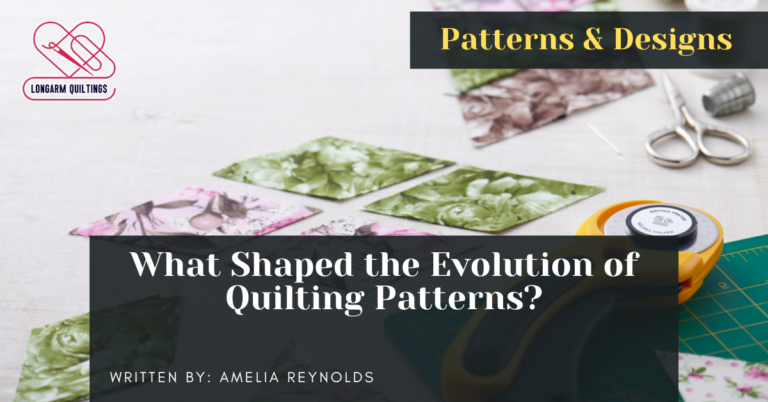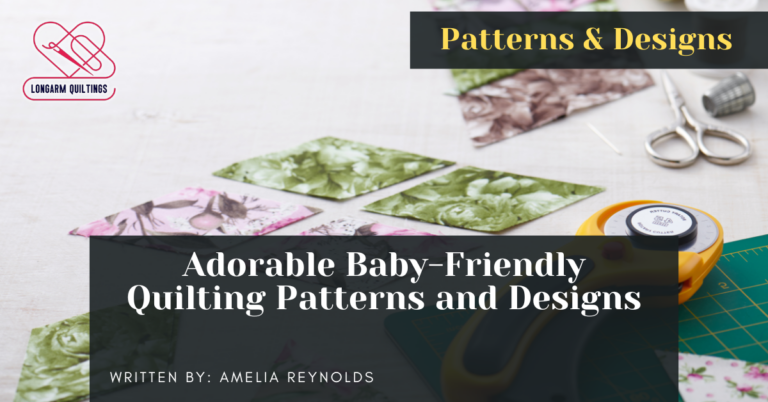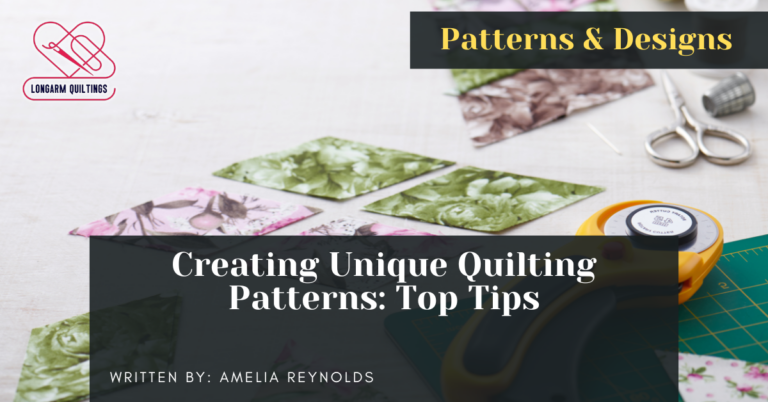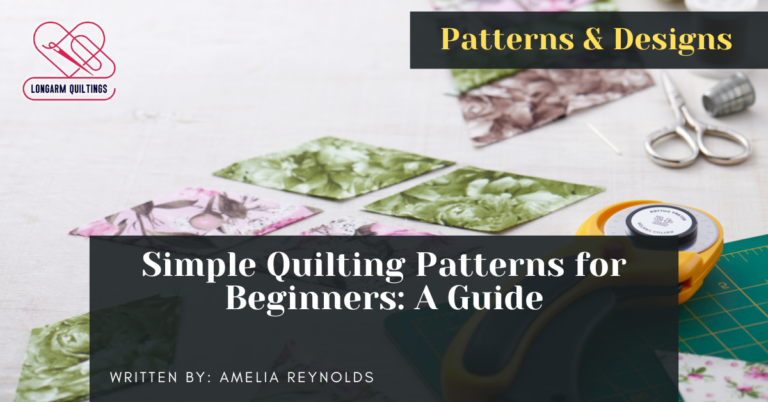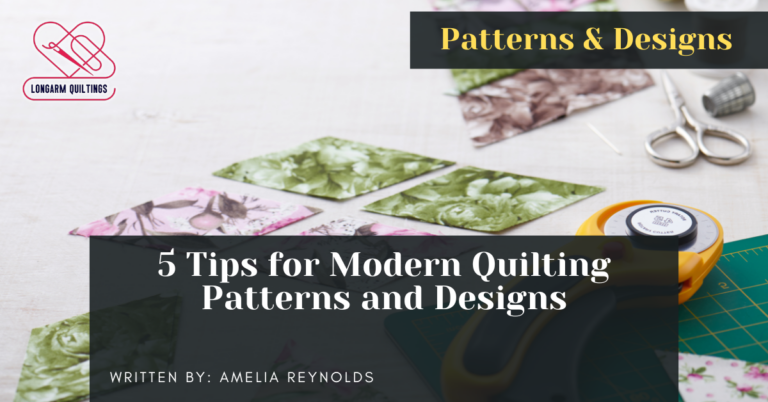Embarking on the journey of designing quilting patterns with software demands a methodical approach that beckons both creativity and precision. The allure of transforming digital sketches into tangible works of art lies in the meticulous process that unfolds.
From selecting the right software to the intricate task of digitizing patterns, each step intertwines technicality with artistic flair. As we delve into the realm of quilting design, the seamless fusion of technology and tradition unveils a world where imagination knows no bounds.
Choosing the Right Quilting Software
Selecting the appropriate quilting software is a critical first step in ensuring efficient and precise pattern design for quilting enthusiasts. When evaluating quilting software options, it is essential to consider the range of software features offered. Look for software that includes features such as pre-designed templates, the ability to create custom designs, automatic stitch generation, and compatibility with different quilting machines. These features can streamline the design process and help bring your quilting ideas to life.
Before making a decision, it is also beneficial to read comparison reviews of different quilting software programs. These reviews can provide insights into the user experience, ease of use, design capabilities, and overall performance of the software. By comparing reviews from multiple sources, you can gain a comprehensive understanding of the strengths and weaknesses of each software option. This information is invaluable in making an informed choice that aligns with your specific quilting design needs.
Sketching Your Design Ideas
Generating a visual representation of your quilting design concepts is a crucial initial step towards bringing your creative ideas to fruition. Sketching allows you to explore different patterns, layouts, and motifs before committing to a final design. When sketching your design ideas, consider using various drawing techniques such as freehand drawing, geometric shapes, or even collage-style sketches. These techniques can help you visualize how different elements will come together in your quilt.
Creative inspiration can come from a myriad of sources. Nature, architecture, art, and even everyday objects can spark new ideas for your quilting patterns. Keep a sketchbook handy to jot down these inspirations whenever they strike. Experiment with different styles and compositions to find what resonates with you the most.
Digitizing the Pattern
When moving from the initial sketching phase to the digital realm, the process of digitizing the quilting pattern involves translating your drawn designs into a digital format for further refinement and manipulation.
To digitize your pattern, you can use specialized quilting software that allows you to create precise shapes and lines. Creating curves digitally enables you to achieve smooth and intricate designs that may be challenging to replicate by hand.
Adjusting the size of your pattern is also easier in the digital environment, as you can simply input the desired dimensions and scale your design accordingly. This step is crucial for ensuring that your quilt pattern fits the intended project perfectly.
Moreover, digitizing your pattern opens up a world of possibilities for customization and experimentation. By digitizing your quilting pattern, you can easily make modifications, duplicate elements, and test out different variations to bring your design vision to life with precision and efficiency.
Customizing Colors and Fabrics
To enhance the visual appeal and overall aesthetic of your quilt design, consider customizing colors and fabrics with careful attention to detail and coordination. When customizing colors and fabrics for your quilt design, it is important to consider the following:
- Color Palettes: Selecting the right color palette is crucial in creating a cohesive and visually pleasing quilt design. Experiment with different color combinations and consider the mood or theme you want to convey through your quilt. Software tools can help you visualize how different colors work together before making a final decision.
- Fabric Selection: The type of fabric you choose can greatly impact the overall look and feel of your quilt. Consider factors such as texture, pattern, and weight when selecting fabrics for different elements of your design. Mixing and matching fabrics can add depth and interest to your quilt pattern.
- Coordination: Ensure that the colors and fabrics you choose complement each other harmoniously. Pay attention to the balance of colors and textures throughout your design to create a visually striking and well-coordinated quilt. Remember that subtle details can make a significant difference in the final outcome of your quilt pattern.
Testing and Refining Your Quilt Pattern
Enhancing the visual appeal and overall aesthetic of your quilt design requires thorough testing and refining to ensure a polished final product. Pattern accuracy is paramount in this phase of the design process. Begin by printing out your digital pattern to scale and piecing it together to verify that the dimensions align correctly. This step helps catch any discrepancies between the digital design and the physical output.
Iterative adjustments play a crucial role in refining your quilt pattern. After the initial test, carefully inspect the pattern for any inconsistencies or areas that may need improvement. Make notes of any changes needed and revise the digital design accordingly. Repeat the process of printing, piecing, and assessing the pattern until you are satisfied with the results.
During this refining stage, pay close attention to details such as seam allowances, block alignment, and overall symmetry. These refinements contribute to a more professional and visually pleasing quilt design. By investing time in testing and making iterative adjustments, you can ensure that your quilt pattern is accurate and ready for production.
Frequently Asked Questions
How Do I Ensure That My Quilt Pattern Is Original and Not a Copy of Someone Else's Design?
Ensuring originality protection for your quilt pattern involves drawing design inspiration from diverse sources, infusing personal creativity, and conducting thorough research to verify uniqueness. By combining these elements, you can create a distinctive and authentic quilt design.
Can I Use Quilting Software to Create Patterns for Different Quilting Techniques, Such as Appliqué or Paper Piecing?
Quilting software offers versatile tools for creating diverse patterns like freeform appliqué and traditional quilting designs, as well as modern techniques such as paper piecing and improv piecing. The digital platform enhances precision and creativity in quilt design processes.
Are There Any Specific Design Elements or Techniques That Quilting Software May Not Be Able to Replicate Accurately?
Accuracy limitations within quilting software may hinder the replication of intricate design nuances. Certain complex techniques like hand-appliqué may prove challenging for software to accurately recreate due to the intricate details and nuances involved.
How Can I Ensure That My Digitized Quilt Pattern Will Translate Well When Stitched Out on Fabric?
To ensure accuracy in fabric translation of digitized quilt patterns, meticulous attention to stitch density, thread tension, and fabric type is crucial. Testing on scrap fabric, adjusting settings, and periodically checking the stitching process can help achieve desired results.
Are There Any Copyright or Licensing Considerations I Need to Be Aware of When Using Quilting Software to Create and Sell Patterns?
When creating and selling quilting patterns using software, it is crucial to be mindful of copyright considerations and licensing requirements. Ensure that you have the necessary permissions to use any copyrighted materials and comply with licensing agreements to avoid legal complications.
Conclusion
In conclusion, designing quilting patterns with software involves the following steps:
- Selecting the appropriate program
- Sketching ideas
- Digitizing the pattern
- Customizing colors and fabrics
- Testing the final product
By following these steps, quilters can create intricate and unique designs with precision and efficiency.
With the help of technology, quilters can bring their creative visions to life in a methodical and organized manner, resulting in stunning and personalized quilts.

